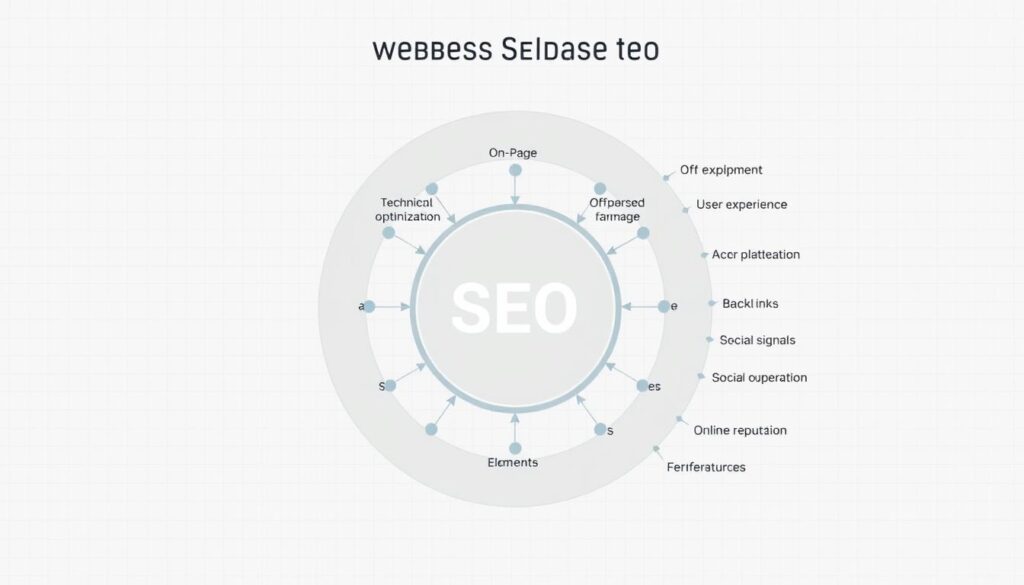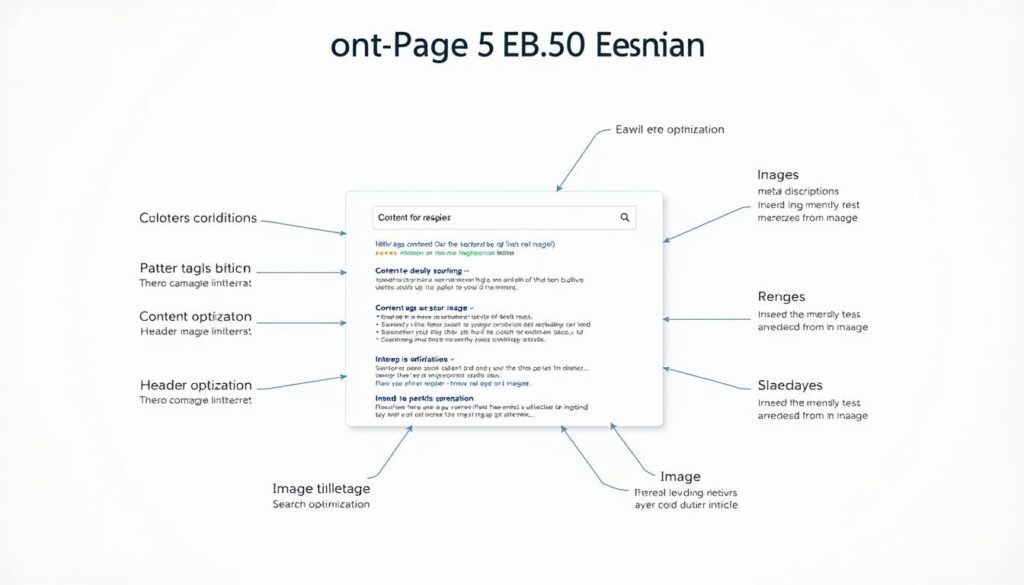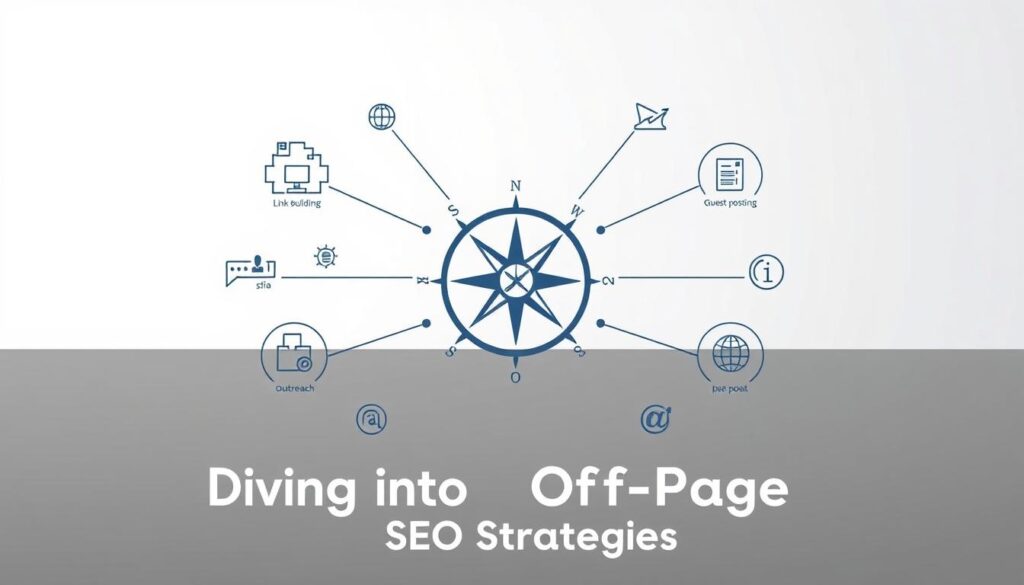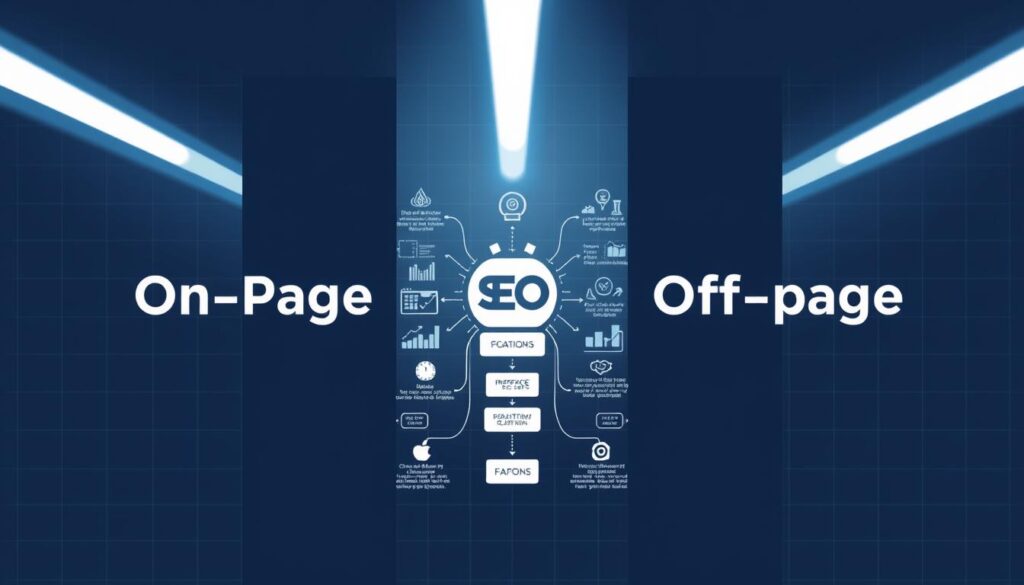Could your website’s search performance hinge more on external factors than your own content? This question challenges a common misconception in digital marketing. While most businesses focus intensely on their site’s technical setup, true visibility requires balancing two distinct approaches.
Optimizing your own content and structure forms the foundation of search visibility. Elements like title tags, internal linking, and mobile responsiveness directly impact how search engines interpret your pages. These controllable factors ensure your material meets both user needs and algorithmic requirements.
Yet modern ranking systems increasingly value third-party validation. External signals like quality backlinks and social media shares act as digital endorsements. They tell search engines your content holds authority beyond your website’s boundaries.
The most effective strategies combine these approaches. Imagine creating perfect content that nobody links to – or earning links to poorly optimized pages. Neither scenario delivers results. This guide reveals how to harmonize both methods, ensuring your website climbs rankings while building lasting credibility.
Introduction to On-Page vs Off-Page SEO
Modern search visibility relies on two pillars working in tandem. While technical optimizations form the backbone, external validation determines long-term success. This balance ensures websites meet evolving algorithmic standards while building industry credibility.

Overview of SEO Components
Internal optimizations focus on elements you control directly. These include keyword placement, page speed improvements, and mobile-friendly designs. Proper implementation helps search engines understand your content’s purpose and relevance.
External strategies involve earning trust signals beyond your domain. High-quality backlinks from reputable sites and genuine social shares act as digital recommendations. These signals prove your content’s value to both users and algorithms.
Importance for Today’s Digital Landscape
Search algorithms now prioritize websites demonstrating expertise through multiple channels. A well-optimized page without third-party validation often struggles to rank. Conversely, viral content lacking proper structure rarely sustains visibility.
The synergy between these approaches creates compounding benefits. Internal improvements make external promotion more effective, while earned authority boosts the impact of technical upgrades. This dual focus future-proofs your strategy against algorithm changes.
Understanding On-Page SEO: Key Elements
Effective website optimization begins with elements under your direct control. These components shape how search engines interpret your material and determine its value to visitors.
Content Quality and Keyword Optimization
Original, useful information forms the backbone of successful strategies. Focus on creating material that answers questions better than competing pages. Use target terms naturally in headers and body text without disrupting readability.
Title tags act as digital storefront signs. Keep them under 70 characters and start with primary terms. Meta descriptions should spark curiosity while summarizing page themes in 150 characters.

HTML Tags and Internal Structure
Header tags (H1-H3) create clear content hierarchies. The H1 should match your title tag, while subheaders break down complex topics. This organization helps both users and algorithms navigate your material.
Strategic internal links connect related ideas across your site. Use descriptive anchor text like “content creation tips” instead of generic phrases. This strengthens thematic connections and spreads authority between pages.
Diving into Off-Page SEO Strategies
Building digital credibility extends beyond your website’s codebase. External signals tell search engines how others perceive your content’s value. This validation process shapes rankings through measurable trust indicators.

Backlink Acquisition and Authority Building
High-quality backlinks act as digital referrals from trusted sources. Focus on earning links from industry-related sites with strong domain ratings. A single authoritative link often outweighs dozens of low-value connections.
Assess potential linking partners through traffic analysis and content relevance. Guest posts on reputable platforms or expert collaborations often yield sustainable results. Avoid artificial link schemes – search engines penalize manipulative practices.
Social Media and Online Reputation
Platform engagement amplifies content reach beyond direct followers. Shares and discussions create ripple effects that may lead to organic mentions. Track brand sentiment across networks to address feedback promptly.
Positive reviews and user-generated content strengthen third-party validation. Implement social listening tools to monitor conversations without direct links. These indirect signals contribute to holistic authority metrics in search algorithms.
Comparative Analysis: On-Page vs Off-Page SEO
Search rankings depend on both internal tweaks and external endorsements. While one approach focuses on elements you command directly, the other thrives on third-party validation. Understanding their distinct roles helps allocate resources effectively.

Core Advantages and Implementation
On-page efforts deliver quick wins through direct website adjustments. Updating meta tags or improving load times shows immediate impact. These changes help search engines interpret content while enhancing user experiences.
External strategies demand patience and networking. Building backlinks from industry authorities often takes months. However, these endorsements boost domain authority more powerfully than most internal optimizations.
Strategic Sequencing for Success
Begin with technical fixes and content improvements. A well-structured site attracts initial traffic and makes external promotion worthwhile. Once foundational elements work properly, shift focus to earning digital referrals.
Budget considerations matter too. Internal optimizations typically cost less than outreach campaigns. Allocate 70% of initial resources to on-page improvements, then gradually increase off-page investments as rankings stabilize.
Mastering On-Page vs Off-Page SEO
True digital dominance emerges when technical precision meets third-party validation. Like a concert pianist harmonizing with an orchestra, your website’s success depends on synchronized internal and external efforts working toward shared goals.

Creating Synergy Between Tactics
Start by refining your core content and structure. Well-optimized pages with fast load speeds and clear navigation make external promotion worthwhile. “You can’t market what doesn’t deliver value first,” notes a leading digital strategist.
Once foundational elements function properly, shift focus to earning endorsements. Quality backlinks amplify your content’s reach while social shares introduce it to new audiences. Track how these external signals boost organic traffic to key pages.
Resource allocation proves critical. Dedicate initial efforts to technical improvements and content upgrades. As rankings stabilize, gradually invest in relationship-building campaigns that yield lasting authority.
Regularly assess both approaches using metrics like dwell time and referral domain quality. Adjust your strategy based on performance data and algorithm updates. This balanced framework ensures sustainable growth in competitive search landscapes.
On-Page SEO Best Practices for Modern Websites
Crafting web pages that satisfy both users and search algorithms requires meticulous attention to foundational elements. These technical refinements determine how effectively your material communicates its value to visitors and crawlers alike.
Optimizing Title Tags, Meta Descriptions, and URL Structures
Title tags serve as digital headlines – keep them under 60 characters with primary keywords first. Test different phrasings using SERP preview tools to avoid truncation. Meta descriptions should entice clicks while summarizing page content naturally, blending relevance with curiosity.
URL structure impacts both usability and crawl efficiency. Use hyphens instead of underscores and eliminate unnecessary parameters. A clean slug like “/content-creation-tips” improves clarity better than “/post123?id=45”.
Enhancing User Experience through Internal Linking and Image Optimization
Strategic internal links guide visitors to related content while distributing authority across your site. Link anchor text should describe destination pages accurately, avoiding generic terms like “click here”.
Compress images without sacrificing quality – aim for file sizes under 200KB. Always include descriptive alt text that explains visual content contextually. For product pages, combine detailed filenames (“blue-widget-product-shot.jpg”) with keyword-rich alt attributes.


